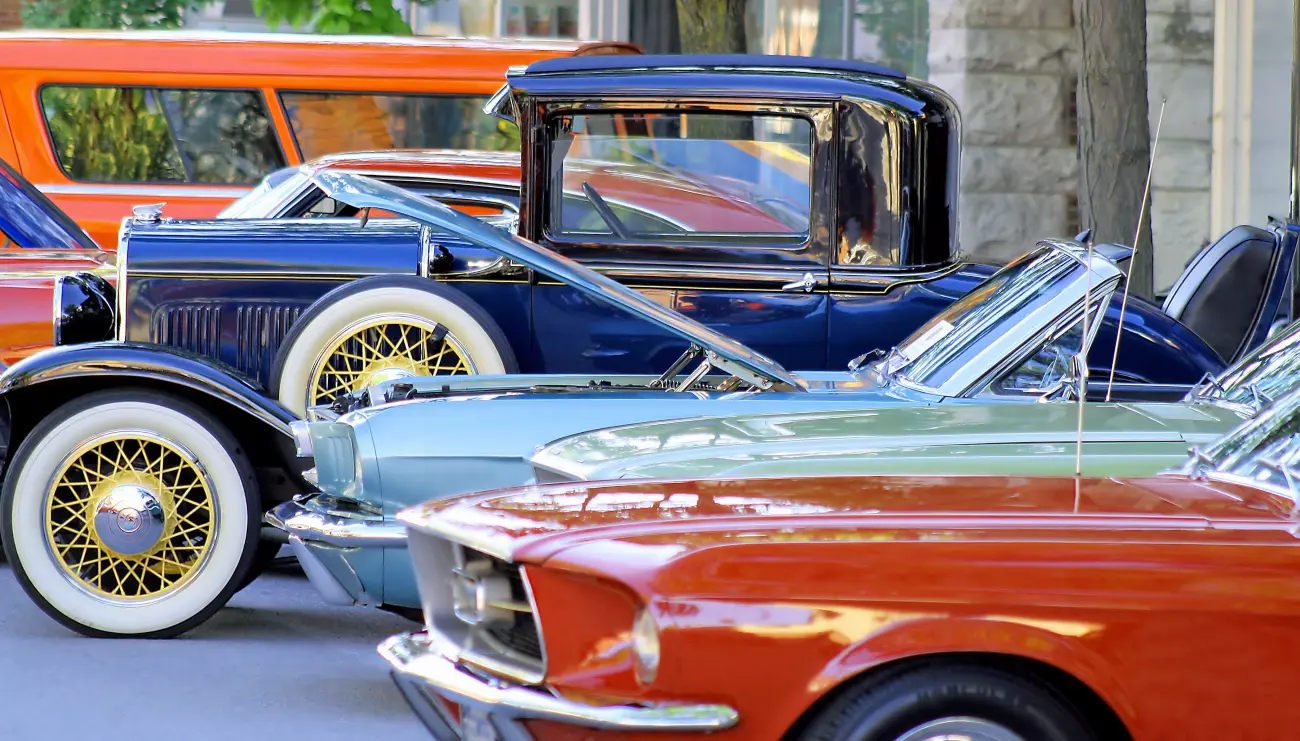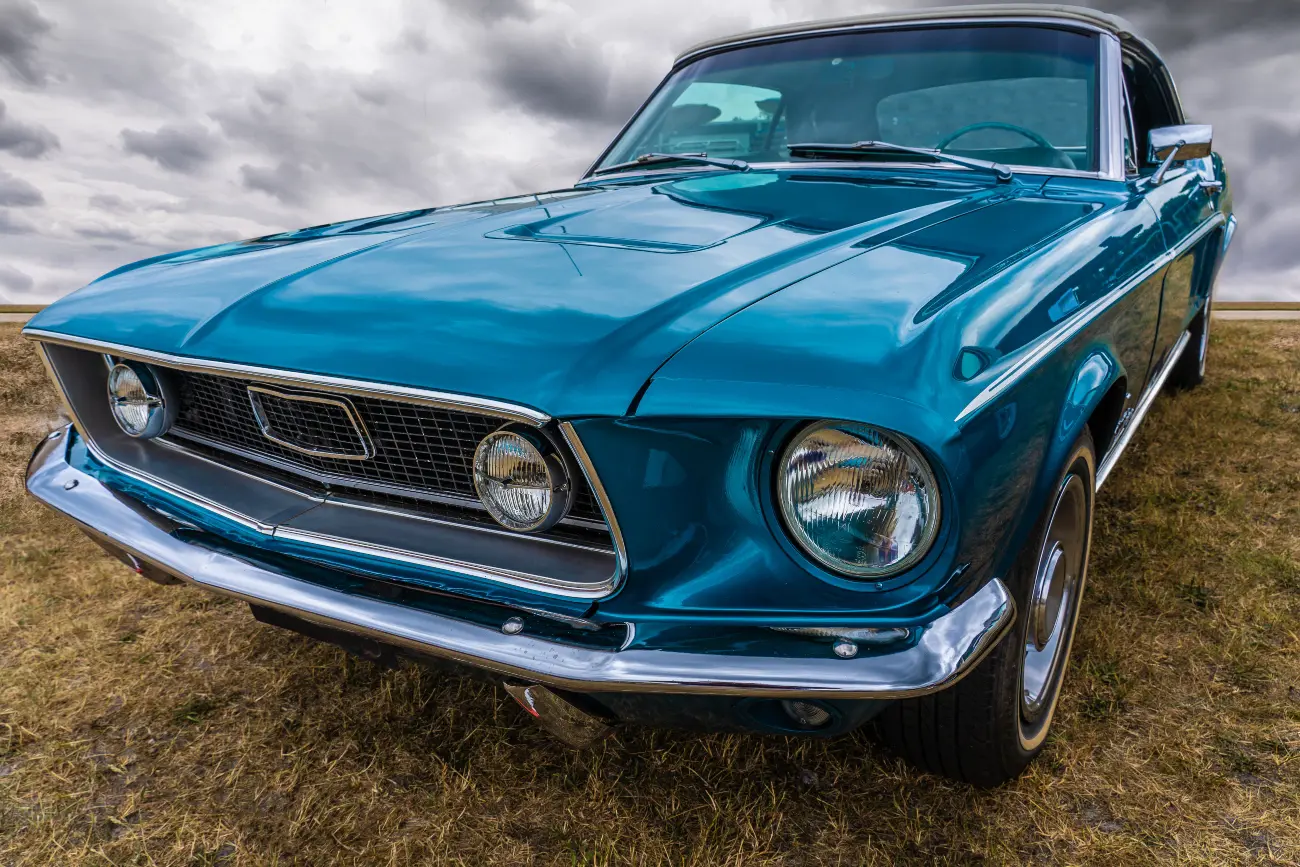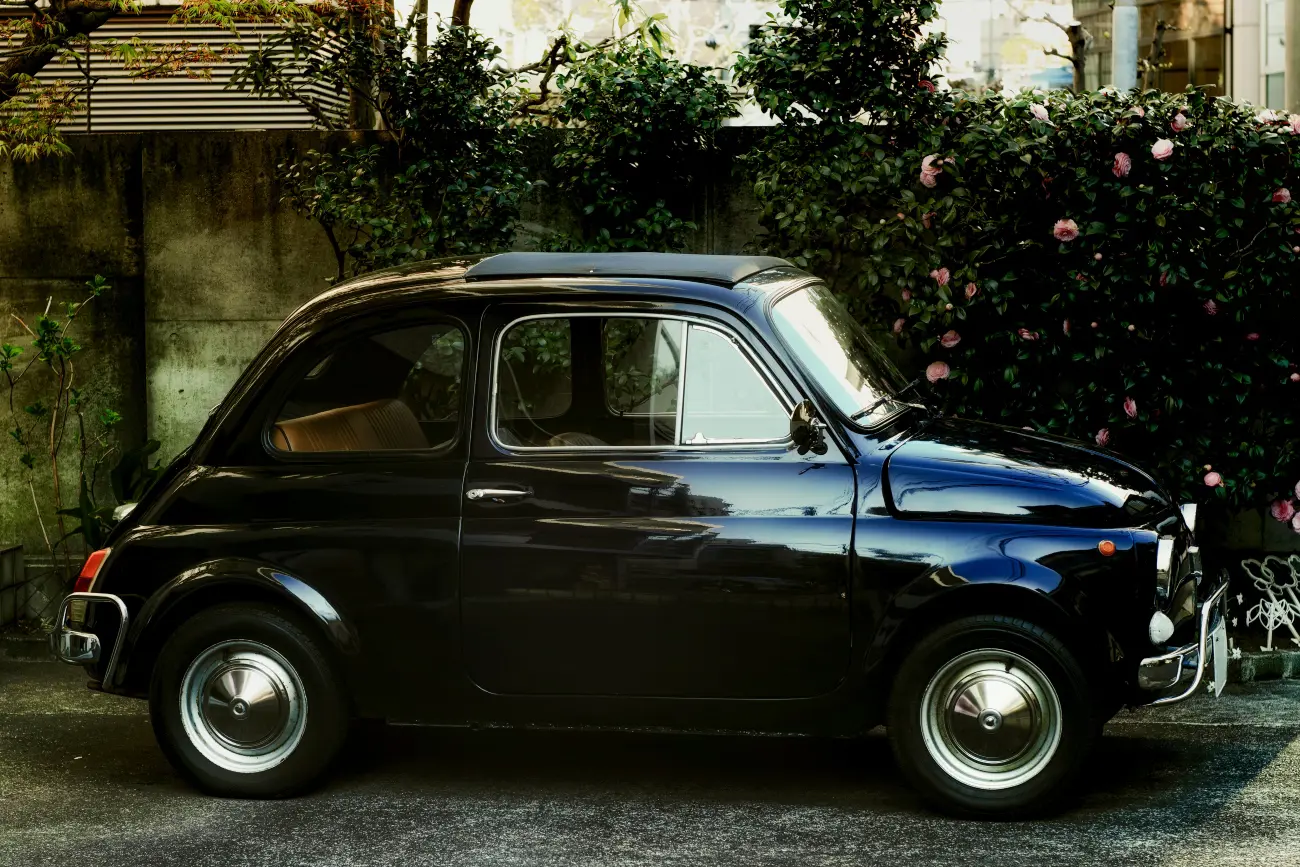Do classic cars hold their value?
26 August 2022
Why do some old cars become valuable commodities, while others settle down into an inexpensive old age? Let’s find out.

We’re always told that new cars lose a chunk of their value as soon as they’re driven off the forecourt. After that, depreciation continues at a steady pace, so that most modern cars lose 15 to 25 per cent of their value in the first year – and a hefty 60 per cent across their first three years.
Is it all downhill after that, though, or do cars reach a certain age when – thanks to earning the title of ‘classic’ – they start to climb back up the value charts?
Strap in as we investigate the secrets of appreciation and depreciation in older cars, especially Japanese classics.
Whether it’s for their futuristic looks or awesome performance (or just because they are the enduringly brilliant Mazda MX-5), Japan has produced some revered classics down the years. Many of these now look like good bets for anyone wanting to invest in a classic car that’s likely to retain its value.
Some of the finest Japanese cars were so-called ‘grey imports’ – cars built for the Japanese domestic market and then shipped over here. These cars are often prized by UK drivers for their rather different driving dynamics and power outputs.
If you have a Japanese car you want to protect for the future, ask us about classic car insurance for Japanese imports.
How do classic cars change in value over time?
This is the big question, isn’t it?
How does the value of a classic change as it gets older?
Can you spot which cars are likely to steadily (or even quickly) grow in value?
Can you also spot the ones that are never going to be desirable enough to exceed, or even approach their list price when new?
We can start out with a general statistic. Classic cars will, in very general terms, tend to gain in value more than certain other forms of ‘collectibles’ such as.
In fact, as reported on financial advice website The Motley Fool, classic cars are one of a select group of high-prestige collectibles that have seen a big spike in value over the last 10 years. The website showed that classic cars had experienced the second biggest growth in value – an impressive 193 per cent – over the previous decade. That leap in value was second only to rare whisky.
So, by those statistics, if you want to make money from your investments, classic cars look like a good route to follow. We should point out, however, that cars have a few more expenses attached to them than some other collectibles.
Take handbags, watches and coins, which all finished just below classic cars in The Motley Fool’s list of fast-appreciating collectibles.
None of these items require much outlay when it comes to ongoing care and maintenance, or storage. They are all small, relatively simple objects that you can safely store at home (or perhaps in a safe) and more or less forget about.
A car, on the other hand, presents a slightly different ownership prospect. It will be more high-maintenance and more complicated to store than, say, stamps, jewellery or vintage comic books.
When you factor in maintenance and fuel (if you’re driving the vehicle, as opposed to just keeping it garaged), you can see how the costs of owning a classic can mount up.
Talking of garaging, this can also be a significant expense of its own. Classic cars will need to be sheltered from the worst that the British weather can throw at them: the cold and wet can have a bad effect on both mechanicals and paintwork, while the grit salt used in winter months can aggravate rust issues in older cars.
We’ve got some advice on how to store a car during winter elsewhere on our site.
Then, of course, there is the insurance. Now, this can be something of a variable with older cars.
On the one hand, the fact that these are often highly valued classics can make insurance costs fairly steep. Against this, however, is the fact that many of these cars are owned and looked after carefully – and driven fairly infrequently.
That’s where classic car insurance comes in. This is a specialist type of insurance that reflects the fact that many older cars are beautifully looked after – and don’t do as many miles as a typical modern car or daily driver.
If you can provide evidence that you look after your classic well – perhaps you keep it in a garage; you’ve got receipts for regular servicing and repairs – this may help you to get a lower premium.
This may be the case whatever insurance you need – whether it’s classic car insurance for Japanese imports, vintage Italian supercars, sensible ‘70s British hatchbacks or any other example of the wonderful range of classic cars out there.
Finally, we’d recommend buying a car that you’re going to love owning, rather than focusing purely on any potential financial gains.
The classic car market does look buoyant – but one thing that many experts agree on is that you should buy a classic because you love it, not because you hope it will rise in value.
Buy wisely by all means, and keep track of any buzz in the car world that might help to indicate which cars are set to rise in value.
But ultimately, you should buy a classic because you want to cherish and look after it, rather than because you hope for a major return on your investment.
How do you spot a future classic?

If you do a little bit of homework and learn what to look for, you may be able to find a classic car that will not only hold its value but appreciate as the years go by.
So just what is it that makes a certain car collectible?
A few factors can help decide whether a certain vehicle will become a genuine classic, and command prices to match.
These include:
1. Historical importance
If a certain car pioneered a certain form of new technology, or was able to do things markedly better than cars in its class had done previously, it will have won itself a place in automobile history – and prices will rise accordingly.
For example, the amazing Jaguar E-Type didn’t just have those stunning looks on its side. It also changed buyers’ views of what a sports car could do, with its near-150mph top speed, seven-second 0-60mph sprint, and other ground-breaking features such as rack and pinion steering and disc brakes.
More recently, the Mazda MX-5 profoundly changed consumer expectations around how much fun you could have in a modestly priced car.
Yes, the MX-5 drove beautifully, looked great and, with its fine handling and simple, no-frills top-down motoring, evoked the glory days of 1960s British roadsters like the Lotus Elan. All this – and yet it could be acquired for the same sort of money that would get you a sensible family car.
Small wonder that buyers flocked to showrooms for some MX-5 action – and that, now, that first-generation car is a revered classic.
If you’re the proud owner of a Mk1 or even Mk2 MX-5, you have a classic on your hands. If you look after it and don’t cover too many miles, you may be able to arrange some classic car insurance that works out cheaper than normal car insurance.
By the way, quite a few of the MX-5s that you see in the used adverts may in fact be examples of the Mazda Eunos – the same car, produced for the domestic Japanese market and brought into Britain as a so-called ‘grey import’.
These imports may be cheaper to buy than their equivalent, UK-market MX-5s of the same age and spec level.
When it comes to insuring, though, make sure you arrange some dedicated classic car insurance for Japanese imports through a specialist like Lancaster.
2. A prestigious sporting history
A car like, say, the Ford Escort Mexico will attract quite a premium over other Escorts of a similar age and condition. That’s because the Escort Mexico’s legendary heroics on the rallying circuit have given the car a certain ‘halo’ aura.
This pushes up values as so many classic and rally fans want to drive (and to be seen in) something iconic. The same cachet has attached itself to the likes of the Audi Quattro, Subaru Impreza, Lancia Delta Integrale – and a fair few others.
3. Good looks
We cited the E-Type just now for its mechanical innovations: we must also praise its legendary kerb appeal. Other cars that have used their eye-catching looks as a pass into the motoring hall of fame include the Aston Martin DB5, BMW 507 and Citroen DS.
But beauty isn’t restricted to the £50,000-and-over sector: more affordable classics such as the Peugeot 205, Ford Capri, Lotus Eclat and Alfa Romeo Alfetta have won universal affection through their good looks.
4. A prestigious name
If a car was conceived by an iconic designer, this will add to the esteem in which it’s held – and to the prices it will fetch on the used market. For example, anything by those revered Italians, Giorgetto Giugiaro, Marcello Gandini and Sergio Pininfarina, gets an almost automatic entry into classic car status. Of course, that includes some wonderful cars – such as the Lotus Esprit, Alfa Romeo Montreal, Fiat X1/9 and Peugeot 504 Cabriolet.
There have been some revered British designers, too – such as Sir Alec Issigonis, Lotus’ Colin Chapman and Roy Axe, the man behind the Hillman Avenger and Rover 800 among others.
Which more recent cars will hold their value?
Good question. We took a punt on some relatively modern cars whose reputation and value looked set to rise, in our feature on future classics from the Noughties.
Key checks to make before buying a classic
It can be hard to know whether an older car is likely to hold its value. If you want to give yourself a good chance of making a sound investment, however, one essential step is to check that the vehicle is in good condition when you buy it.
When you purchase a used car – whether from a dealer, auction or via a private sale – you should always ask to see as much documentation as possible. A full service history is really useful, as is a stack of invoices and receipts for work carried out on the vehicle.
You can also use the DVLA’s MOT tracker to check all MOT tests carried out since 2005. This site will also tell you the car’s mileage as recorded at that last MOT, so you can check whether the mileage claimed in an advert is genuine.
After that, pay attention to any damage from accidents, and to how it has been repaired.
Older cars, in particular, may have high mileage – and the more travelling they have done, the greater likelihood that they have suffered the odd scratch, ding or dent.
Check for any damage like this, and for how it has been repaired. Anything that looks like a rushed welding job, or poorly matched paintwork is not ideal and should be reflected in the price of the car.
Also look out for rust. Metal corrosion can affect a huge range of vehicles from 1980 and earlier.
Around then, the so-called ‘tin worm’ started to become less of a problem, as cars began to be built using a lighter steel that proved to be less prone to rust. Electrocoating the bodywork was another major milestone in the battle against rust.
When you are looking at cars from the 1960s and 1970s, however, you should definitely check for signs of rust. Many cars from the era were at risk, including quite a few Japanese classics.
If you are considering buying a car from this time, do check carefully as most classic car insurance won’t cover for rust. Our advice is to bring along a magnet when you go to look at the car.
Place the magnet on the car’s bodywork and see if it falls straight off. If it does, that is a sign that the car has been filled with some kind of filler, and that the rust problem has not been treated adequately.
Lastly, we would strongly recommend joining the relevant owners’ club for any classic you are interested in or own already. Owners’ clubs, online forums and Facebook fan groups are a great place to source advice on your classic – whether you are looking for a hard-to-source part or wondering why the vehicle makes that strange noise at 50mph.
What’s more, joining an owners’ club can often give you access to discounts on your classic car insurance for Japanese imports, French classics – or whatever else you’re driving.
Some classic Japanese cars to consider
We’ve touched on Japanese classics in particular so far in this article. With that in mind, here are four amazing cars from the Land of the Rising Sun that you may like to consider.
Remember that, if you look after them well and don’t cover big distances, you may be eligible for classic car insurance. We are proud to provide classic car insurance for Japanese imports and UK-market cars alike.
You may also want to read our dedicated piece on classic car insurance for Japanese imports.
Lexus LS 400
In the early 1980s, the European luxury car market was dominated by the German marques – Mercedes, BMW and, to a lesser extent back then, Audi.
Toyota, to its credit, decided to try to infiltrate this market – and it did a fine job with the LS 400. The very first Toyota to be created under the firm’s new luxury car division, Lexus, the LS 400 was a brilliant super saloon.
Its 4.0-litre V8 engine purred away quietly, the ride was soft and pillowy, and the beautifully built interior featured a selection of ground-breaking technology.
The Lexus LS 400, in short, was a car for discerning buyers who wanted something a little different from their luxury barge. It continues to be held in very high esteem today.
What’s more, that legendary bulletproof Japanese reliability should mean that survivors are still running well.
Honda Civic Type R (EP3 – based on seventh generation Civic)
Through its many generations, the Civic has always been an affordable, reliable and practical small family car. With the Type R, which first arrived with the seventh generation in 2000, Honda added some serious performance into the mix.
Its 2.0-litre engine was capable of putting out 197bhp and of turning over at 8,500 revs per minute.
You can imagine the delightful high-pitched whine that’s produced at those revs.
Honda NSX
Honda’s late 1980s supercar famously had design input from the late, great Ayrton Senna. The revered racing driver helped out during the car’s development stages, testing prototypes at the Suzuka circuit in Japan and feeding back to the Honda design team.
The Japanese marque had a relatively simple aim. It wanted to offer something that could compete, on road and track, with contemporary V8 Ferraris, such as 308 and 328. Where the NSX would stand out, however, was in its lower list price.
No wonder the NSX became a revered piece of Japanese engineering.
You can read more about it in our tribute to this amazing car.
Nissan 350Z
A few years into this millennium, Nissan was probably best known for producing the Micra, the cheap and cutely styled supermini that entered its third generation in 2002.
The Nissan from that era that we prefer to remember, however, is the sporty and scintillating 350Z coupé.
The 350Z both echoed, but also moved the game on from, Nissan’s much-loved 240Z / 260Z / 280Z family from the 1970s. It looked great; it boasted old-school, rear-wheel-drive driving thrills; it also had some decent muscle-car performance under the bonnet.
Once again, this is a car that should prove reliable. What’s more, you shouldn’t need more than £6,000 or £8,000 for a decent example.
With luck, many miles of hugely engaging yet problem-free B-road blasting await you.
Find classic car insurance for Japanese imports and UK cars at Lancaster

Japan’s car marques have given us some wonderful classics, of which the four mentioned above are only a tiny sample. These are cars to own and enjoy – and, with luck, they may hold their value or even appreciate as the years go by.
Make sure to protect your investment with some classic car insurance for Japanese imports or UK-market cars.
We can provide insurance for both types, and a whole host of other classics to boot.
We also offer a range of great benefits – including our Two Year Agreed Valuation, which will help you to make sure that your car is valued correctly.
Why not contact us for a quote today?
